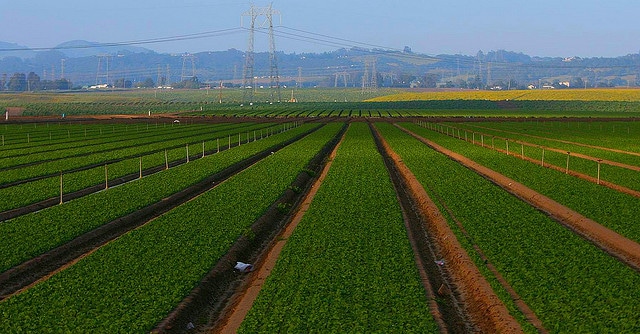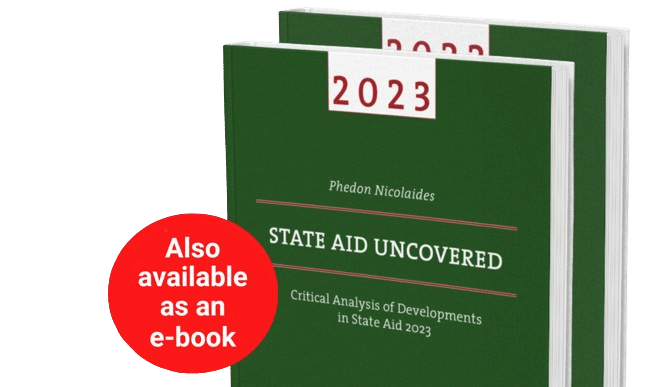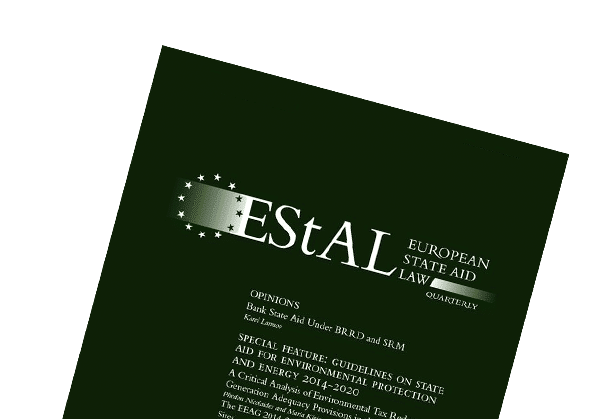
The market price of land or buildings can be determined via auction, expert valuation or other appropriate methods.
Introduction
On 16 July 2015, the Court of Justice delivered its judgment in case C‑39/14, BVVG Bodenverwertungs- und -verwaltungs GmbH [BVVG] v Landkreis Jerichower Land in Germany.[1] The judgment was in response to a request for a preliminary ruling concerning a dispute between BVVG and Landkreis Jerichower Land. BVVG is a state-owned agency responsible for selling public land in Germany. Under German law, the sale of agricultural land requires consent. Consent may be refused when it appears that the price offered is grossly disproportionate to the value of the land.
The dispute arose because Landkreis Jerichower Land refused to authorise a sale of agricultural land to two non-farmers. The two non-farmers participated in an auction of agricultural land and submitted the highest bid which was EUR 29,000. Landkreis Jerichower Land, as the local authority competent to authorise the sale, refused to approve the transaction because it considered that the price was grossly disproportionate to the agricultural market value of the land.
The referring court explained that, in the German case law, a price is grossly disproportionate where it exceeds the agricultural market value of the land by more than 50%. That value corresponds to the price paid for land of the same type when it is agreed in a transaction between two farmers. The refusal was justified on the grounds that the sale at such a high price to non-professional farmers would have adverse effects on agricultural holdings because, if the price of agricultural land still available became excessive, farmers in need of land to expand their businesses would no longer be able to purchase that land.
In other words, the relevant German law imposed a ceiling on the maximum price that could be bid by non-farmers. Surely, this put farmers at a more advantageous position. Yet, the Court reached a different conclusion.
The judgment
The question put to the Court of Justice by the referring national court was whether the relevant provisions of the German law constituted State aid for farmers. Since no party disputed that there was a transfer of state resources, selectivity and affectation of trade, the issue at hand was whether the sale price was different from the market price so that farmers could derive an abnormal advantage [i.e. an advantage not normally available under market conditions].
According to the Court of Justice, “[28] such a sale may confer on the purchaser, as a recipient, an advantage which, in essence, leads to a reduction of the State budget consisting in the State forgoing the difference between the market value of the land and the lower price paid by that purchaser.” “[29] In particular, in relation to the sale by public authorities of land or buildings to an undertaking or to an individual involved in an economic activity such as agriculture or forestry, the Court has held that such a sale may include elements of State aid, in particular where it is not made at market value, that is to say, where it is not sold at the price which a private investor, operating in normal competitive conditions, would have been able to fix (judgment in Seydaland Vereinigte Agrarbetriebe, C‑239/09, EU:C:2010:778, paragraph 34 and the case-law cited).”
Then the Court went on to clarify that “[30] it follows that, where national law establishes calculation rules used to estimate the market value of land for sale by public authorities, the application of those rules must, in order to comply with Article 107 TFEU, result in all cases in a price as close as possible to the market value (see, to that effect, judgment in Seydaland Vereinigte Agrarbetriebe, C‑239/09, EU:C:2010:778, paragraph 35).”
At this point it is necessary to digress slightly to consider the principles established by other judgments in order to appreciate the reasoning of the Court in the present case. I will argue that the Court in the present case misapplied its own case law.
How to establish the market value
The Court of Justice quotes at length the judgment in case C-239/09, Seydaland Vereinigte Agrarbetriebe. It also draws inspiration from the Commission’s 1997 Communication on State aid elements in sale of land and buildings by public authorities. The Communication defines two methods for establishing a presumption that the sale of public land or buildings is free of State aid: i) open auction and ii) independent expert valuation.
The case law recognises that these two options create a presumption of absence of State aid, but it also gives latitude to Member States to use other methods, provided that they are capable of deriving a price that is “as close as possible to the market value”. The rationale is that a public authority that wants to sell land may not be able to rely either on an open auction or benefit from the services of expert surveyors.
However, what the Court of Justice in the present judgment seems to have missed is that paragraph 35 of the Seydaland Vereinigte Agrarbetriebe case which itself cites implies that one may not deviate from a price that is arrived as a result of an auction. That is, the auction price is necessarily the market price. Indeed the part of paragraph 35 not quoted by the Court in its present judgment is that the “[…] market value is theoretical, except in the case of sales accepting the highest bid […]” . This implies that auctions or tenders always produce a price that is equal to the market price while other methods only approximate the market price.
Do you know we also publish a journal on State aid?

The European State Aid Law Quarterly is available online and in print, and our subscribers benefit from a reduced price for our events.
There are other judgments that confirm this interpretation. For example, the Court of Justice, in case C-214/12 P, Land Burgenland v Commission, which is also cited in the present judgment, unequivocally declared in paragraph 92 that “it is the Court’s settled case-law that the market price is the highest price which a private investor acting under normal competitive conditions is ready to pay” .
Undoubtedly, there can be several methods that can be used to determine the market price of a plot of land or building. An auction or open tender is sufficient but not necessary. However, as explained above, the result of an auction or tender is equivalent to the market price. At this point an important question arises. May a public authority disregard the outcome of a properly executed auction or open tender for another method? That is, if you carry out an auction, can you ignore its outcome and opt for another method to determine the market price. The answer is definitely no. The General Court gave an excellent explanation in its judgment in the Bank Burgenland case [T-268/08, Land Burgenland v Commission] that led to the appeal before the Court of Justice that was cited in the previous paragraph [case C-214/12 P confirmed the findings of the General Court in case T-268/08].
It is worth quoting at length the relevant excerpts from the ruling of the General Court in T-268/08. “[69] It must be noted that the market price of an undertaking, which generally depends on the interplay of supply and demand, corresponds to the highest price that a private investor operating in normal competitive conditions would be prepared to pay for that undertaking”. “[70] When a public authority intends to sell an undertaking belonging to it and makes use of an open, transparent and unconditional tender procedure to do that, it can therefore be presumed that the market price corresponds to the highest offer”. “[71] […] it cannot be complained that the Commission did not take account of the independent studies, […] , which are said to support the applicants’ argument that the price offered by GRAWE for the purchase of BB is consistent with the market price.” “[72] Reliance on such studies for the purpose of determining BB’s market price would only make sense if no tender procedure with a view to the sale of BB was carried out or, possibly, if it was concluded that the tender procedure set up was not open, transparent and unconditional. In that regard, it is unquestionable that the offers which have been properly and actually submitted in the course of the tender procedure launched for the purpose of the privatisation of a particular undertaking in principle amount to a better approximation of the market price of that entity than independent studies. Such studies, irrespective of the method and parameters selected for their drafting, are based on a prospective examination and therefore lead to an evaluation of the market price of the undertaking in question which is of less value than that which results from offers actually and properly submitted in connection with a lawfully set up tender procedure” . “[73] For the same reasons, the Commission can neither be reproached for not having considered it necessary to have an ex post study drawn up by an independent expert nor be accused of having in that way failed in its duty to undertake a diligent and impartial examination of the measures to which it must give attention. As is clearly apparent from recitals 112 and 113 of the contested decision, the Commission proceeded on the basis that, in the presence of binding offers to purchase BB, independent studies, irrespective of their author, the date on which they were drafted or the analysis method chosen, were, as such, irrelevant for determining whether the price paid by GRAWE to buy BB corresponded to the market price.”
These statements lead to the following important conclusions. First, every valuation method, other than an actual auction or tender, is speculative. Second, the result of an auction or valuation may not be disregarded even when it is thought that the bidder made a mistake. In this respect, the Court of Justice, in ruling on the argument brought by Land Burgenland that the winning bid was too high, noted that “[99] […] the private market-economy vendor will opt in principle for the highest offer, where that offer is binding and credible, regardless of the reasons which led the potential buyer to submit that offer, and that, as a result, the claim that the amount of the offer submitted by the Consortium was be exorbitant must be rejected” [case C-214/12 P].
When is the market price not the market price?
Now we can return to the present judgment. The Court indeed acknowledged that when an auction has been carried out “[33] […] it is not necessary to resort to other methods in order to check the market price, such as independent expert reports (see, to that effect, judgment in Land Burgenland and Others v Commission, C‑214/12 P, C‑215/12 P and C‑223/12 P, EU:C:2013:682, paragraph 95).”
Since under German law land may not be sold to the highest bidder where it is considered that the price offered is grossly disproportionate to the value of the land, “even though that bid may be presumed to correspond to the market price of the land”, the Court observed that there was State aid because “[38] […] the application of such a measure results in an advantage being conferred on a third-party purchaser, as a recipient, through a reduction of the State budget consisting in the State forgoing the difference between the value of the land, as assessed by the competent local authorities, and the higher price offered by the highest bidder in a public call for tenders.”
Then the Court made a surprising statement. “[39] Having said that, it is conceivable that, in specific circumstances, the method of a sale to the highest bidder does not result in a price which corresponds to the market value of the property in question and that, as a result, taking into consideration factors other than the price may be justified.” “[40] That could be the case in particular where, as the Advocate General observed in point 71 of his Opinion, the highest bid is distinctly higher than any other price offered in the public call for tenders and the estimated market value of the land on the basis of its manifestly speculative nature.” “[41] In such circumstances, the method of a sale to the highest bidder would not be appropriate for reflecting the market value of the land in question.”
As we saw earlier, the case law acknowledges that the motives of prospective buyers are irrelevant. Equally irrelevant is whether their bids are “speculative” or “exorbitant”. The market price is the highest price someone is willing to offer for whatever reason. The private vendor principle is founded on the premise that the aim of a private vendor is to maximise revenue from sale. Nothing else. Whether the buyer is wrong or motivated by greed or a speculative urge it is not of concern to a private vendor. At any rate, the Court does not offer any advice how it can be determined whether a price is “speculative”.
The Commission’s Communication on sale of land defines market price as “the price at which land and buildings could be sold under private contract between a willing seller and an arm’s length buyer on the date of valuation, it being assumed that the property is publicly exposed to the market, that market conditions permit orderly disposal and that a normal period, having regard to the nature of the property, is available for the negotiation of the sale”. There is nothing here about speculation or the motives of the buyer.
Then the Court entangled itself in circular reasoning. “[42] Consequently, a rule of national law enabling the competent national authority, in those circumstances, to reject a bid which in its opinion is disproportionate and to refuse, on that ground, to consent to the sale of the agricultural land which that bid relates to, cannot be classified as ‘State aid’, provided that the application of that rule results in a price which is […] as close as possible to the market value of the land at issue.” If we reject a price that is formed by the voluntary actions of market participants how can we know that an alternative method will bring us as close as possible to the market value? The Court did not answer this question because it claimed it did not have all the necessary information. It passed the task to the referring national court.
But in attempting to give guidance to the national court, the Court of Justice fell deeper into circular reasoning. The national court “[47] […] will have to ensure, in particular, that the method for valuing the agricultural land includes an update mechanism which takes into account the development of market prices in such a way that the estimate provided corresponds as closely as possible to the current market value of the land (see, to that effect, judgment in Seydaland Vereinigte Agrarbetriebe, C‑239/09, EU:C:2010:778, paragraph 43).” But what is that market value if the market value as determined by the auction is rejected?
The Court also added that “[48] […] the referring court must establish whether the highest bid corresponds to the market value of the land at issue or whether it is necessary to take into account factors other than the price, thus justifying the application of the measure referred to in [the relevant German law].” The only non-price factors admitted in the case law mentioned above [Bank Burgenland] are those which can expedite or ensure the conclusion of the sale, such as ability by the buyer to obtain credit or any necessary licence. They have nothing to do with achieving any policy aims such as keeping land for farmers. That would not be in line with the private vendor principle.
The German government argued that it was justified by requirements relating to safeguarding the interests of agricultural holdings and aimed to ensure that professional farmers were not burdened with the purchase costs of new land which could endanger the profitability of their farms. In response the Court of Justice noted, correctly, that “[51] […] such an argument is not sufficient in itself to exclude such a measure outright from classification as ‘State aid’ within the meaning of Article 107(1) TFEU.” The concept of State aid “[52] […] does not distinguish between measures of State intervention by reference to their causes or their aims but defines them in relation to their effects”.
It is difficult to understand how the Court of Justice could reconcile its statements in paragraphs 48, on the one hand, and paragraphs 51 & 52, on the other. What kind of factors can be taken into account which are unrelated to the aims of the measure?
Conclusion
The national court may very well conclude from this rather convoluted judgment that it can establish the market price by disregarding the highest bid, if that bid can be shown to be speculative. It may, for example, opt for the second highest bid. However, even this method will result in State aid for the buyer. The selling authority will have lost potential revenue.
———————————————————————–
[1] The full text of the judgment can be accessed at:


